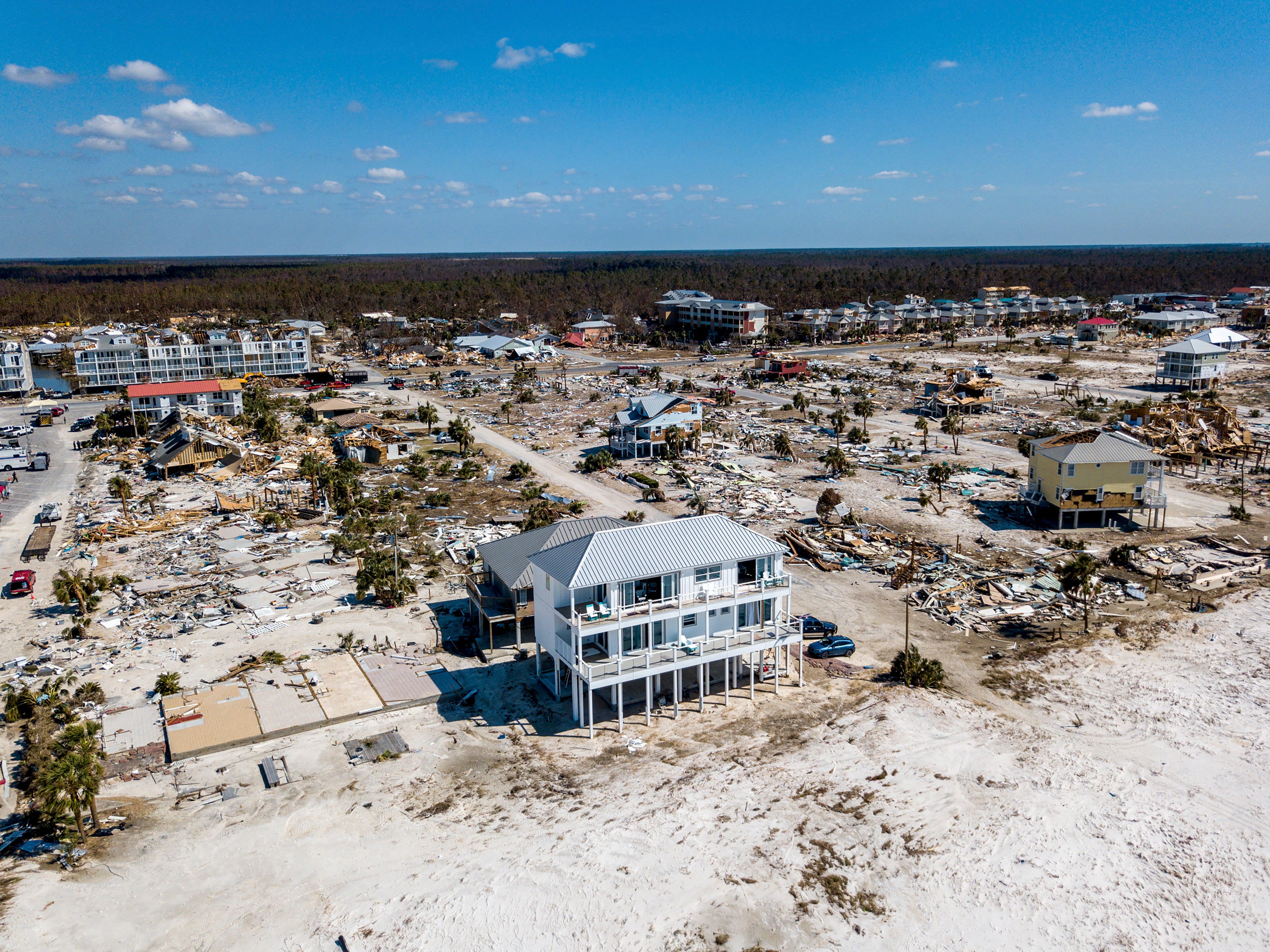
After Category 5 Hurricane Michael slammed into Mexico Beach, Fla., in 2018, there was a dramatic contrast in destruction: homes built at or beyond state building codes still stood, whereas many of those built before those stringent codes were enacted were simply gone.
Michael is one of a growing number of multibillion-dollar disasters in the U.S.—the country has already set a record for such disasters so far this year—that emphasize how crucial building codes are to protecting life and property. And as climate change amplifies hazards, state and local governments must prioritize updating their residential building codes to meet minimum safety standards.
These standards are set, in part, by the International Code Council (ICC), an association of building safety professionals. Following rigorous testing of building methods, surveys conducted after disasters and other research, its members and any interested parties work to develop a consensus set of model codes, which are updated every three years. The codes are written to apply to locally relevant hazards, from how high to raise a house to avoid flooding in Louisiana to how much shaking a building in San Francisco should be able to withstand. ICC officials tell us that the methods they recommend can be as simple as using a certain type of nail or connectors that prevent roofs from blowing away in high-wind events.
These recommendations work. A 2018 study in Land Economics found that houses built after Florida adopted statewide building codes based on the ICC’s model codes saw 72 percent fewer insured losses from wind-related damage. Both the Federal Emergency Management Agency (FEMA) and the nonprofit National Institute for Building Sciences have found that for every $1 spent on conforming to the 2018 ICC code, $11 in damage costs are saved.
But what building codes become law in the U.S. depends on state and local governments, resulting in a confusing patchwork. A 2020 FEMA study found that 65 percent of counties, cities and towns across the country have not adopted the most recent building codes and that 30 percent of new construction is happening in places that either have no code or have not updated theirs in 20 years.
In San Antonio, Tex., for example, the city has up-to-date codes, but in the unincorporated part of Bexar County outside city limits, county government has set no codes whatsoever. Residents are often unaware that their dwelling may not be resilient to winds, floods and other hazards, instead assuming the government has put proper safety standards in place.
As Anne Cope, chief engineer of the nonprofit Institute for Business & Home Safety notes, we have safety standards for cribs, but “we have huge geographic swathes of the United States that have no safety standard for the shelter in which that crib is placed.” (You can look up your local code status at InspecttoProtect.org.)
Homebuilders and policymakers have raised concerns that stronger codes would raise home prices. But no study has reliably shown that, and several have shown no effect. Moore, Okla., updated its codes after a devastating 2011 tornado outbreak but did not see an appreciable difference in home costs compared with nearby Norman, which did not enact an updated code, according to a 2018 study. And relatively small increases in up-front costs are recouped through savings in insurance premiums, energy use and averted damage. A sealed roof deck that keeps rain out when shingles are blown off may add to the immediate cost of a new house, but it is far cheaper than replacing a roof and water-damaged floors and belongings.
Some officials, particularly in smaller jurisdictions, say they lack the funding or personnel to staff a building code enforcement office. Yet there are examples of communities in Texas using cooperative agreements with larger cities or, in the case of Pompano Beach, Fla., contracting with private engineering firms to overcome this hurdle.
States must also ensure enforcement by facilitating cooperative agreements and providing grants for homes that meet certain standards. Alabama saw the benefit of such grants when homeowners who received them to build wind-resistant roofs emerged largely unscathed from 2020’s Hurricane Sally. The homes of people who did not benefit from the grants were covered in blue tarps.
The federal government—which has limited means to influence building codes—must ramp up efforts to tie relevant state and municipal funding, such as predisaster mitigation grants, to having up-to-date building codes in place. It should also provide more funding for jurisdictions to meet hazard-resistant codes, in addition to energy-efficient ones.
It shouldn’t take a Hurricane Andrew, a deadly tornado or a devastating flood for government officials to decide to adopt a strong building code. These measures are not just part of climate change resiliency but good fiscal planning and common sense. The codes should be in place before disaster strikes, to avert huge costs, devastation to communities that cannot afford to rebuild and very preventable loss of life.









